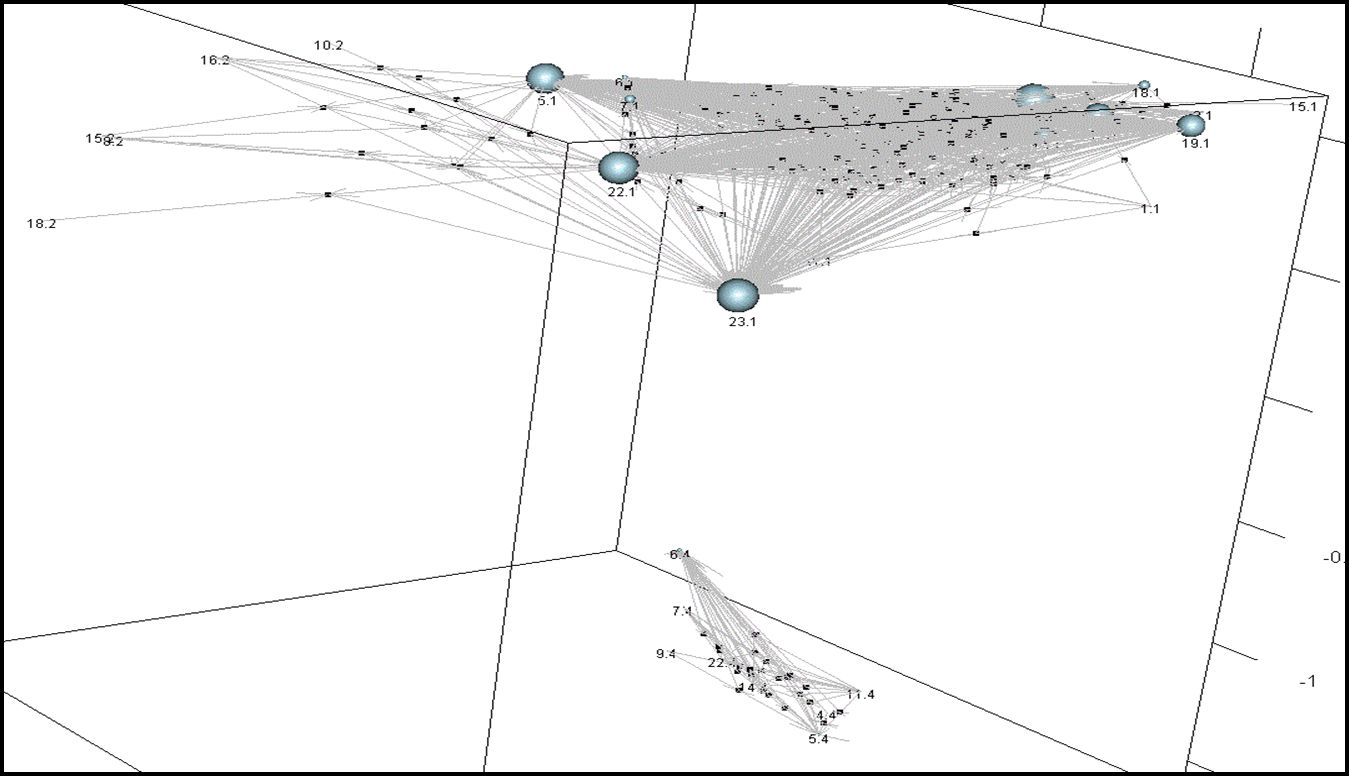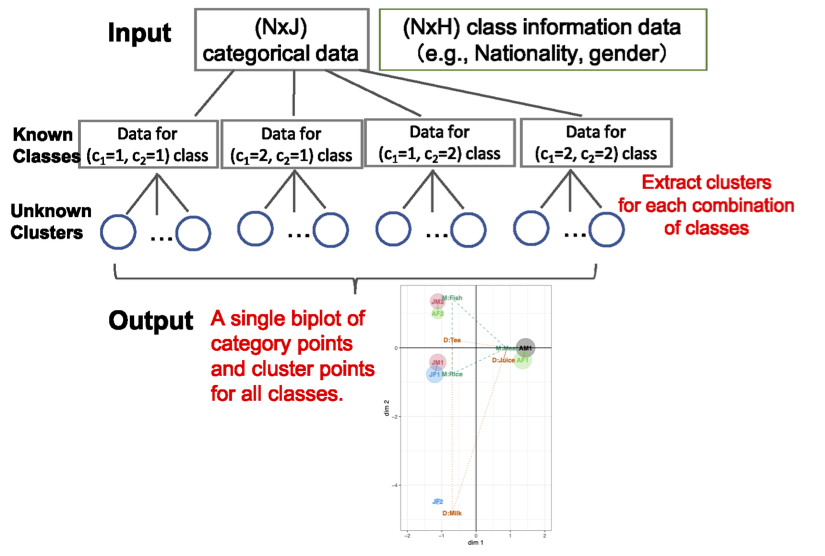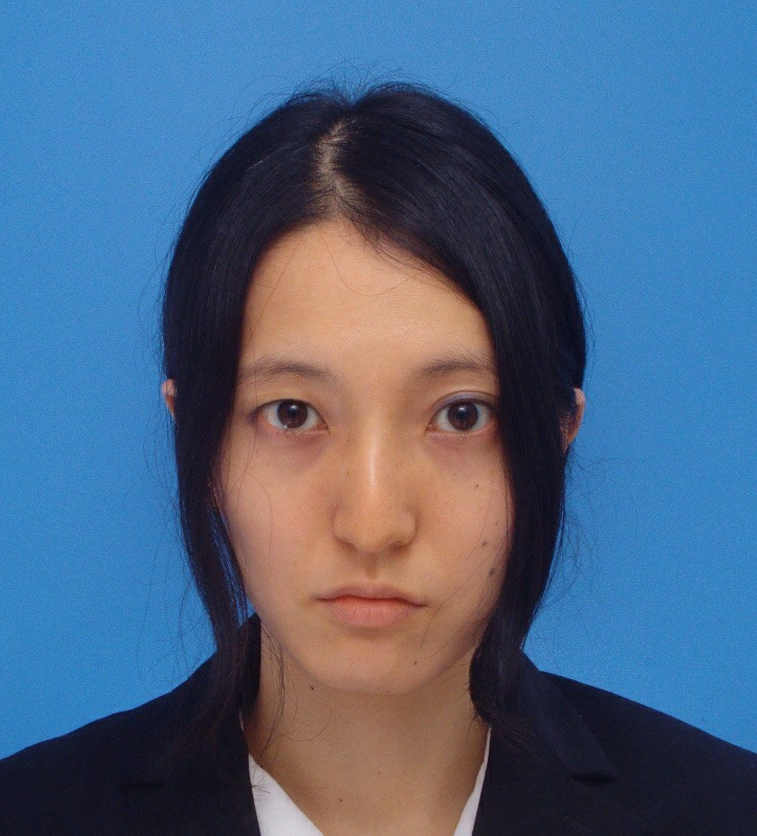Design and Analysis of Environmental Survey and Experiments
Staff
Research Topics
There are various types of data related to the environmental field. It is important to analyze obtained multivariate data, spatial data with spatio-temporal information, text data, picture data, and other data types. We apply and develop statistical approaches and methods to understand these data. As our main study thema, we working on spatial structure analysis as a developing statistical method.
Structure analysis and hotspot detection for spatio-temporal data
|
Recently, the target of statistical science has become more complicated; particularly in spatial data, it is necessary to analyze the data in time series and multi-dimensions in addition to conventional fixed time and space scenarios. Furthermore, the amount of data has been increasing. For complicated and large-scale spatial data, we are developing hierarchically representational approaches based on geographical and temporal positional information for each region. In addition, we are researching methods for detecting significant clusters, such as hot-spot or cold-spot, using their spatial structure. |

|
Data analysis for survey data and variable selection in multivariate method
|
For survey data, such as that collected in the environmental disciplines, we must manage diverse data, and sometimes apply multivariate analysis or data mining methods to analyze such data. We study the variable selection method in multivariate analysis. In addition, we are developing computational algorithms for multivariate analysis. |

|
Development of statistical methods for visualization of high-dimensional data
|
I am developing statistical methods for data visualization that enables us to grasp at a glance the characteristics of high-dimensional data. In survey data, in addition to question items, information such as the attributes of each subject (gender, occupation, etc.) is often given, and information on how the tendency of respondents' answers differs depending on these attributes is useful for understanding the characteristics of the data. In this case, the high-dimensional data is reduced to a two-dimensional space for visualization, and there are various ideas on how to construct a projection that preserves the useful information of the data. I am investigating statistical methods that can efficiently extract easily interpretable information from high-dimensional data and quantitatively evaluate the accuracy of the visualization results, and am also developing software for easy application in practical situations. |

|
Publication List
- Takagishi, M. and van de Velden, M. Visualizing class specific heterogeneous tendencies in categorical data. Journal of Computational and Graphical Statistics, 2022. DOI:10.1080/10618600.2022.2035737
- Kurihara, K. and Ishioka, F. Echelon analysis and its software for spatial latticedata.Wiley Interdisciplinary Reviews: Computational Statistics, e1579, 2022. DOI: 10.1002/wics.1579.
- Goto, S., Takagishi, M. and Yadohisa, H. Clustering for time-varying relational count data. Computational Statistics & Data Analysis. 156, 107-123, 2021. DOI: 10.1016/j.csda.2020.107123.
- Kurihara, K., Ishioka, F. and Kajinishi, S. Spatial and temporal clustering based on the echelon scan technique and software analysis. Japanese Journal of Statistics and Data Science, 3(1), 313-332, 2021. DOI: 10.1007/s42081-020-00072-1.
- Takagishi, M., van de Velden, M., and Yadohisa, H., Clustering preference data in the presence of response style bias. British Journal of Mathematical and Statistical Psychology. 72(3), 401-425, 2019. DOI: 10.1111/bmsp.12170.
- Takagishi, M. and Yadohisa, H., Robust curve registration using the t distribution, Behaviormetrika. 46(1), 177 - 198, 2019. DOI: 10.1007/s41237-019-00077-5.
- Ishioka, F., Kawahara, J., Mizuta, M., Minato, S. and Kurihara, K. Evaluation of hotspot cluster detection using spatial scan statistic based on exact counting. Japanese Journal of Statistics and Data Science, 2(1), 241-262, 2019. DOI: 10.1007/s42081-018-0030-6.
- Ishioka F and Kurihara K. Detection of space-time clusters for radiation data using spatial interpolation and scan statistics. Proceedings of COMPSTAT2016 (22nd International Conference on Computational Statistics), 85-97, 2016.
- Kuroda M, Mori Y, Iizuka M and Sakakihara, M. Acceleration of convergence of the alternating leastof the IASC (IASC-ARS 2015), 2015.
- Sakakihara M., Kuroda M., Mori Y and Iizuka M. On acceleration methods for Alternating Least Squares algorithm. Conferences of the International Federation of Classification Societies 2015.
- Ishioka F and Kurihara K. Detection of spatial clusters using echelon scanning method. Proceedings of COMPSTAT2012 (20th International Conference on Computational Statistics), 341- squares algorithm for mixed measurement level multivariate data, The 10th International Chinese Statistical Association (ICSA) International Conference, 2016.
- Sakakihara M, Kuroda M., Mori Y and Iizuka M. Acceleration of iterative methods for Nonnegative Matrix Factorization. Book of abstracts of COMPSTAT2016, 2, 2016.
- Tomita M., Kubota T and Ishioka F. Spatial clustering properties in the temporal variation of suicide rates/numbers among Japanese citizens: A comprehensive comparison and discussion, PLoS ONE, 2015. DOI:10.1371/journal.pone.0127358
- Mori Y., Kuroda M., Sakakihara M and Iizuka M. Acceleration of the alternating least squares algorithm for nonlinear multivariate analyses. The 9th Conference of the Asian Regional Section 352, 2012.

